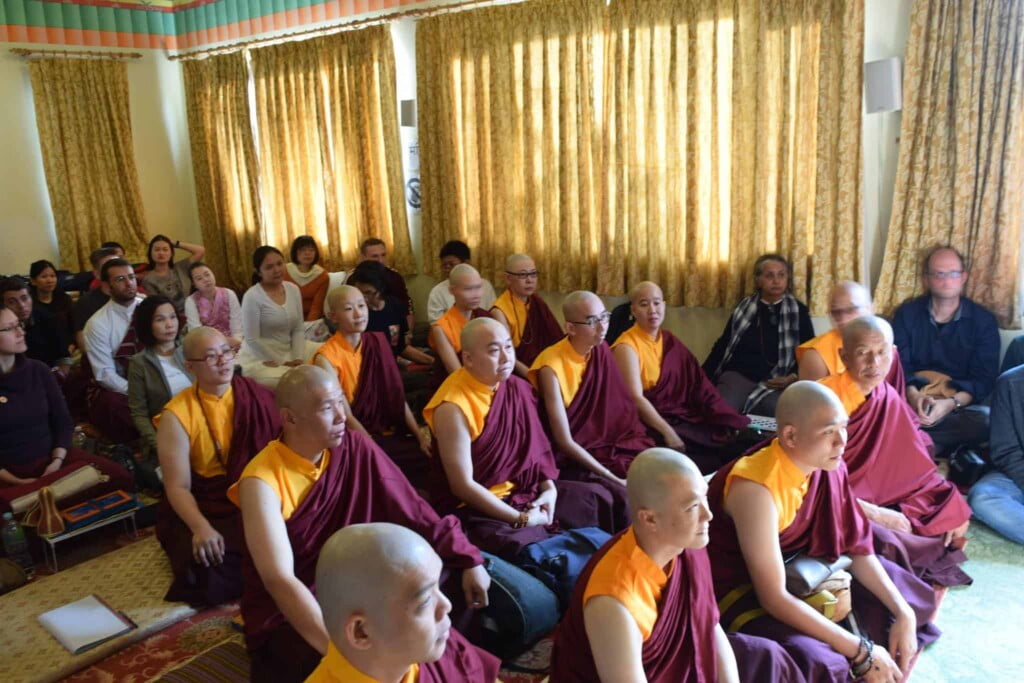Developing Qualities of a Dharma Student
A Dharma student may enter the Buddhist path through a number of different doorways. We may be searching for some stress relief, some quiet space, or some deeper meaning in life. From that sense of unease or curiosity, we may decide to examine meditation or mindfulness training. Then, as we begin to explore our minds, we may become interested in learning more about Buddhism. Another way we begin engaging is by noticing and responding positively to pithy quotes from Buddhist teachers.
From that initial spark, we might read some Buddhist books or listen to a few podcasts. A friend could recommend a few websites and we might then spend some time listening to brief snippets of teachings. Or we gradually find ourselves attending a few talks and retreats. Eventually, we may even enroll in some weekend seminars or sign up for some on-line Buddhist courses. We have become a Dharma student.
Yet, do we know how to make the most of this opportunity? We may not be sure of how we should approach learning. Now we have a unique opportunity and we might want some practical advice. Here, we can turn to classic Buddhist texts for suggestions on how to be the best type of Dharma student.
In this excerpt from Khenpo Gyaltsen’s A Lamp Illuminating the Path to Liberation: An Explanation of Essential Topics for Dharma Students, Khenpo examines quotes from classic Mahāyāna texts. This practical advice from a lama using authentic sources benefits our listening and studies. For example, we can learn the importance of framing our practice with the best motivation. And once we know the proper approach for a Dharma student, we can make swift progress!
The Way the Student Listens to the Dharma
The Qualities of the Student
The qualities of the student, the listener, are as taught in the Four Hundred Stanzas:
An unprejudiced, intelligent, and interested Listener is called a vessel.
As explained there, if you listen to the dharma whilst holding your own view to be supreme, then even if the speaker gives an excellent discourse it will not be of any benefit to you. This being so, we first of all need to have an unprejudiced attitude. This is a very important point. The student should have the following four qualities.
Regarding the first quality, an unprejudiced attitude, it is taught in The Essence of the Middle Way:
By being biased, the mind is anguished
And peace will never be attained
[ Aryadeva’s Four Hundred Stanzas on the Middle Way, translated by Ruth Sonam (Snow Lion Publications, 2008), p. 239]
The second quality is to be intelligent; the student needs a natural intelligence through which he can understand the words and meaning of the teaching that is being explained.
The third quality is that the student needs to have the interest that wishes to understand the words and meaning of the teaching.
The fourth quality is that the student needs to have respect and be free of pride.
The Manner in which the Student Listens to the Dharma
At the outset, the manner in which the student listens is the most important factor, and his motivation even more so. For, as it is said:
What makes an action good or bad?
Not how it looks, nor whether it is big or small,
But the good or evil motivation behind it.[The Words of My Perfect Teacher, Patrul Rinpoche, translated by the Padmakara Translation Group (Sacred Literature, 1998), p. 8]
And:
Everything is circumstantial
And depends entirely on one’s aspiration.
[The Words of My Perfect Teacher, Patrul Rinpoche, translated by the Padmakara Translation Group (Sacred Literature, 1998), p. 9]
In this way, if your motivation is to gain status and reputation for yourself then, no matter how much dharma study and practice you may do, it will not be authentic. Therefore, at the very outset it is crucial to correct your motivation. The vast mind-set, the motivation of bodhicitta (the mind of enlightenment) is to think as follows:
“All sentient beings here in samsara, without a single exception, have been my parents.When they were my parents, they gave me the best of the food that they had, they lovingly clothed me, and they raised me with intense love and care. They were extremely kind. These kind parents long for happiness but do not know how to engage in the causes of happiness – the ten virtues. They do not want to suffer, yet they do not know how to abandon the causes of suffering – the ten non-virtues. In this way, their most basic wish and their actions are in contradiction. They have stumbled onto a mistaken path and are in a state of utter confusion, just like a blind person stranded in the middle of a plain. These poor sentient beings! I will now listen to the sacred dharma and put it into practice and accomplish their aims. I will purify the karmic appearances and habitual tendencies of each of the six classes of sentient beings. I will do this for all my parent sentient beings, tormented as they are by the sufferings of the six classes, and I will establish every single one of them at the level of ultimate omniscience, enlightenment.”
This motivation is of utmost importance in all contexts, whether you are studying, reflecting upon, meditating, or practicing the dharma.
This teaching is an excerpt from:
A Lamp Illuminating the Path to Liberation: An Explanation of Essential Topics for Dharma Students by Khenpo Gyaltsen (translated by Lhasey Lotsawa Translations, Nepal: 2014, pp. 10-12). For more information, please visit https://lhaseylotsawa.org/books/a-lamp-illuminating-the-path-to-liberation.










Responses